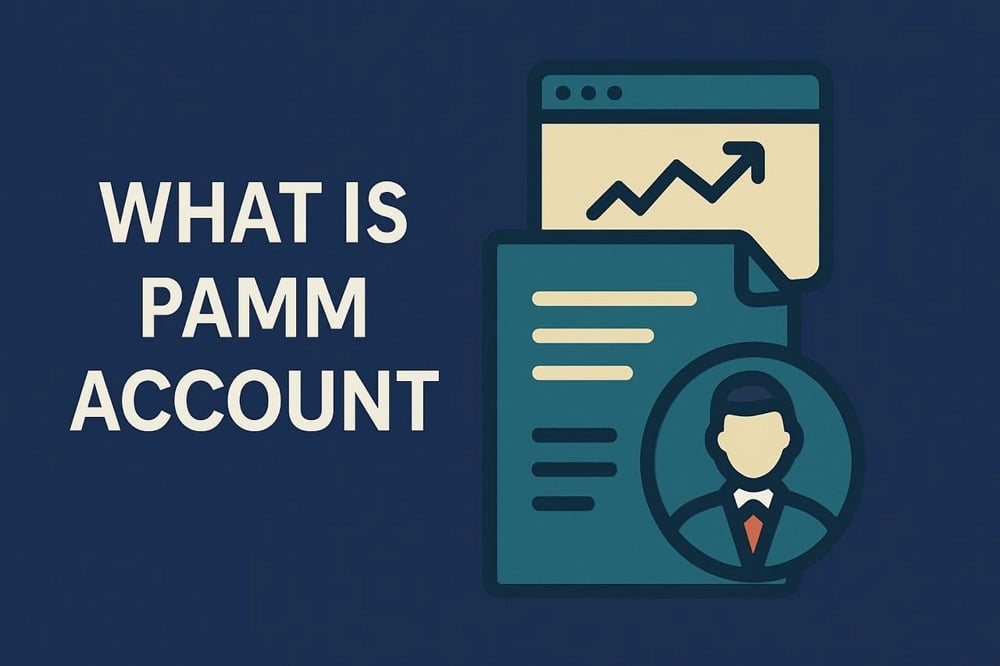What Is PAMM in Trading? Complete Guide to PAMM Accounts and Investment
PAMM (Percentage Allocation Management Module) is a financial structure that allows investors to allocate their capital to a professional trader, known as a PAMM manager, who trades on their behalf. Profits and losses are distributed proportionally among all participants, based on the size of their individual investments. This system has become particularly popular in Forex trading, where transparency and automation are crucial.
In this article, we’ll break down how PAMM works, how it differs from similar systems, and how it connects with PAMM accounts, legal aspects, and investor safety.
What Is a PAMM Account?
A PAMM account is the core structure through which the PAMM system operates. It enables a trader to manage multiple investors’ funds from a single trading account. Each investor’s money remains segregated in terms of accounting, but trades are executed as if the total capital is one combined fund.
To understand this more precisely, refer to our in-depth article on what is a PAMM account, which explores how these accounts are structured and operated.
How Does PAMM Investment Work?
PAMM investment functions on the principle of capital pooling with proportional allocation of results. Investors choose a PAMM manager based on their trading performance and risk metrics. Once they commit funds, the manager trades using the pooled capital. The gains and losses from these trades are automatically calculated and distributed according to each investor’s share.
You can explore a step-by-step breakdown in our article on how PAMM investment works.
Is a PAMM Account Safe?
Investor protection is often a concern. While PAMM accounts provide a layer of transparency and control, they are not risk-free. Investors should assess the manager’s track record and use platforms that offer robust monitoring tools. To better understand the protective features and associated concerns, read Are PAMM accounts safe for investors.
What Are the Risks of a PAMM Account?
Like any trading or investment model, PAMM involves risk. These can include market risk, poor manager performance, platform manipulation, and lack of regulatory clarity. It’s essential to know what you’re exposed to. We've outlined these hazards in detail in the article main risks of a PAMM account investment.
Is a PAMM Account Profitable?
The potential for profit in PAMM trading depends largely on the manager’s skill and market conditions. While some investors report significant gains, others may experience losses. A fair assessment can be found in our guide is a PAMM account profitable, which evaluates returns based on real scenarios.
Are PAMM Accounts Legal?
Legal status varies by jurisdiction. In some regions, PAMM systems are regulated under investment management laws, while in others they may fall into grey zones. To understand the regional differences, see legal status of PAMM accounts.
FAQ
What does PAMM stand for in Forex trading?PAMM stands for Percentage Allocation Management Module, used primarily in Forex to allow investors to allocate capital to a trader managing multiple accounts.
How is a PAMM account different from a regular trading account?A PAMM account aggregates investments from multiple clients, whereas a regular account handles only one user’s funds.
Is PAMM profitable in the long term?It depends on market conditions and manager competence. Learn more in our guide on PAMM profit potential.
What risks should I consider before investing in PAMM?Risks include market volatility, poor trader performance, and regulatory uncertainty. Read more in main risks of a PAMM account.
Are PAMM systems regulated globally?Not uniformly. Some countries regulate PAMM under investment laws, others do not. Refer to legal status of PAMM accounts.
How do I get started with PAMM investing?Choose a reliable broker, evaluate manager performance, and read our detailed guide on how PAMM works.









Comments
Such developments underscore the growing investor confidence in automation technologies